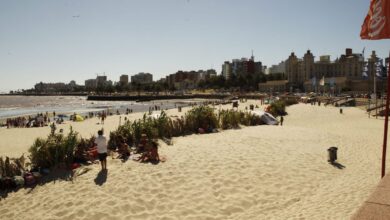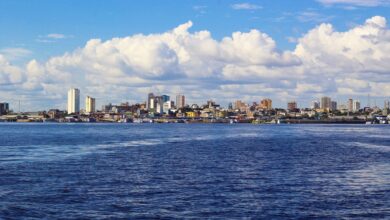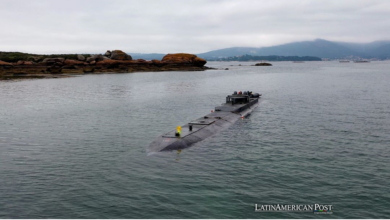In 2023, More than 200 Hectares of Coral Reefs will be Restored in Colombia
Within the framework of the UN Decade on the Restoration of Ecosystems, the government has promoted the project “One million corals for Colombia”. This initiative seeks to cultivate not only that amount of coral, but also to restore 200 hectares of reefs in Colombia by 2023.

Photo: Pexels
LatinAmerican Post | Daniel Alejandro Vergara
Listen to this article
Leer en español: En 2023, se restaurarán más de 200 hectáreas de arrecifes en Colombia
Both the Atlantic and Pacific oceans will benefit from a project that plans to restore reefs in Colombia. It is the most ambitious project of its kind in America. Although corals are commonly thought of as rocks or plants, they are actually animals. These marine invertebrate organisms are organized in colonies and their structures are made up of many individual creatures (polyps) that grow connected to each other. Much of its food comes from plankton, in an almost perfect symbiosis process when a polyp eats, it provides food to the others. Currently, there are more than 6,000 species of corals in the world, of which about 80 are found in the oceans of Colombia. For this reason, the "One million corals for Colombia" project and the plan to restore 200 reefs in Colombia.
We recommend you read: Gallery: Colombia, the Most Diverse Country in Butterflies
Why a project to restore the country's coral reefs?
Beyond the agreements that were established between the Colombian government and the United Nations, the restoration of corals is essential to maintain life in the sea and on land, although it may not seem like it, these invertebrate organisms have a great influence on the daily life of human beings.
According to ESRI (Environmental System Research Institute), a leading company in Geographic Information Systems (GIS), coral reefs are related to the livelihood of 30 million artisanal fishermen, thanks to the fact that they shelter and provide protection for a diversity of fish, it is estimated that they are home to close to a million aquatic species. Likewise, being so attractive, they contribute, through tourism, close to 105,000 million dollars for the Caribbean economy. In addition, they are responsible for forming white sand beaches and tropical islands, since, due to the strategic position in which they are located in the oceans, they absorb between 70 and 90% of the energy generated by the waves that reach the coasts. .
According to the Colombian Ministry of the Environment: "The country has more than 180,000 hectares of coral reefs, of which the majority, about 79%, are in the Caribbean, being the regions of the archipelagos of San Andrés, Providencia and Santa Catalina, that of San Bernardo and the Rosario Islands where they are most concentrated”.
Another of the benefits of coral reefs is the contribution to the generation of oxygen thanks to its relationship with other organisms such as phytoplankton. According to estimates by the United Nations Environment Program (UNEP), if the temperature of the oceans increased by 2 degrees, that would cause the extinction of 35% of corals in the world and would cause a reduction in global oxygen production of 28%.
What is happening to coral reefs?
The entity Parques Naturales de Colombia states that about 60% of coral reefs in the country's marine territory are under some threat. 19% have been destroyed and 35% may disappear in less than a decade. Coastal development, overfishing, pollution and the devastating effects of the climate crisis are part of the problems that are causing the extinction of various coral species not only in Colombia but in the world.
According to data provided by the Colombian Ministry of the Environment: "In the Caribbean, the annual rate of loss of live coral cover in the last 25 years is 9.2%, while the reduction in populations of staghorn and horn corals of elk reaches 97%. Globally, 75% of the planet's coral reefs are threatened, 19% have been destroyed and projections show that, if effective measures are not taken, as Colombia is doing, the percentage of threatened coral reefs it will increase to 90% in 2030 and close to 100% in 2050”.
How are corals restored?
A journalistic investigative division of the United Nations accompanied Elvira Alvarado (marine biologist) and several colleagues on the mission to plant 13,500 coral fragments in 8 days. To do this, the biologist explained the process to UN NEWS: “They will set up three tables and, over the next eight days, they will place 900 "cookies" containing five coral microfragments of eight different species each. The number of individuals of each species will depend on the healthy pieces of reef that divers can find and collect.
It is estimated that the slowest growing species will take between a year and a year and a half to be at the optimum height to be transplanted to the most affected reefs. Together with Alvarado's initiative, the efforts of many professionals who are contributing together with the government initiative to the restoration of these vital ecosystems are added.
Marina biologist Alexandra Hernández, who is also supporting the initiative in another nature reserve, points out that: “Life brings more life, so when these places that were initially degraded are restored, living fragments are brought back, and they start to grow, the life, and with it the fish. With the fish also comes the resurgence of the economic activities of the people of the region. This is beneficial for everyone and for the environment; let's not forget that 70% of the oxygen we breathe we owe to the oceans".
Everything indicates that with the efforts of the government, various NGOs, fishermen, biologists and marine biologists and the scientific community, the goal of one million corals in the oceans of Colombia can be met. This can not only represent positive changes in the economy, but also in food security, in the social sphere and most importantly in the environmental factor.




